Steamboat Springs – The Entrepreneurial Enclave
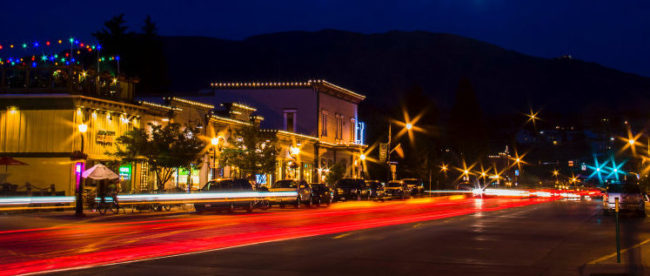
Some Steamboat entrepreneurs and start-ups have been around for decades and some are just planting their roots. All are manifestations of an idea brought to fruition by vision, risk, work and luck. With a backdrop like Steamboat Springs as the inspiration this town has become the little entrepreneurial engine that chugs steadily, like a well-conditioned athlete, to the top.
Given the tendency to distil everything we encounter in the world to make them more understandable and relatable, it’s a safe bet that most people would characterize Steamboat Springs by the three R’s- ranching, recreation and real estate. Yet, quietly, a fourth R- Rising Businesses and Startups, is an economic trend that figures to impact the future of this fabled town, anchoring the northwestern quadrant of Colorado for decades to come. So, whether you’re a budding entrepreneur who looks find out more about the development process or are interested in visiting Steamboat Springs to improve your current idea, we profiled five of those prolific Steamboat Springs business owners below.
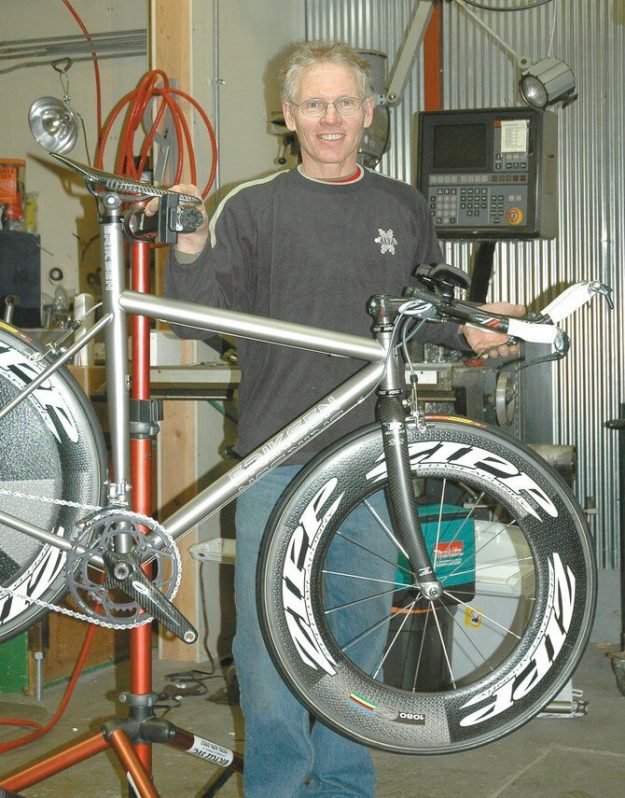
A CHILLY RECEPTION
Despite selling his stake in a second bicycling company, MOOTS, to start his third, Kent Erickson Cycles, the namesake of this custom bike frame builder paused over the term “accidental entrepreneur” before warming to the suggested description of his 40+ year business career in Steamboat.
How accidental?
“I’d biked through the west from Wisconsin and I stopped where I ran out of money, which was Steamboat Springs,” he said. It was a less than warm welcome. Upon his arrival on New Year’s Eve of 1974 after hitchhiking from Aspen, he camped in the town park on a -44 below night. “My sleeping pad snapped in half when I woke up,” he recalls.
Like most young people moving to a mountain town, work and future were secondary to living for the moment, the next ride, the next powder dump. But after seeing his first boss, despite running a solid business, lose his house after incurring too much debt, he started slowly when opening Sore Saddle Cyclery shortly thereafter.
Sore Saddle’s capital management in the early days meant splitting the summer and ski seasons with some ski shop operators and availing himself of “affordable housing” by living in a tree house off the grid. Innovation took shape when, in the early 80’s, he affixed an old Champion Cruiser with 26-inch wheels with a five gear derailleur- a mountain bike was born, and so was Moots, named after Mr. Moots, a childhood toy alligator in tux and top hat. (Incidentally, Mr. Moots was at the helm of a van that petered out while Erickson was sheepherding a dozen hitchhikers over a pass in Jackson Hole, but you’ll have to stop by the shop to get that story firsthand).
Riding and racing against the likes of legends Ned Overend, Alexi Grewal, Mike Kloser and others further fueled a fixation with bike frame geometry and gear ratios. Mountain biking was in its infancy, and Erickson describes his business growth through those years as growing his business “a little at a time and staying out of banks.” He also partnered with others as a way to increase innovation and reduce risk. The result? After building Moots to a company making nearly 1000 bikes a year with over 30 people on the payroll, Erickson cashed out in 2002, consulted for another five years, and launched his custom bike building enterprise with wife Katie and two other employees. “We’re making 130-140 bikes a year right now, and we’re right where I want us to be.” As for customer service, his latest company designs custom bikes upon request with no obligation to potential customers. “I’ve learned that, in most instances, they eventually come around to wanting us to build them their bike.”
Some folks say 40 years account for a generation. Despite never having taken a single college class, Erickson looks back at a career in business virtually unblemished by a down year. He shows little interest in the classic tools of entrepreneurship: market segmentation, strategy, analytics, systems and structures. Rather, innovation, sound capital management and attention to customer service have served him just fine. What then, would he pass on to the next Steamboat dreamer? “Be frugal and take measured steps. I was patient and worked very hard and understood my numbers. I started in a small town where everyone could talk about what you were doing, and with the Internet, everything’s a small town now, so answer your phone and go above and beyond to fix a problem. It’s an opportunity to deepen allegiance from your customer.”
Kent and Katie today live not far from the tree house of decades ago, and in much the same fashion by being off the grid. He’s building a machine shop on his land now. Why? “I’m inventing some things,” he said. Despite professing a desire to not have to go into work every day at 60 years old, it’s likely the lights from his solar generated shop will be on a lot, probably nightly.
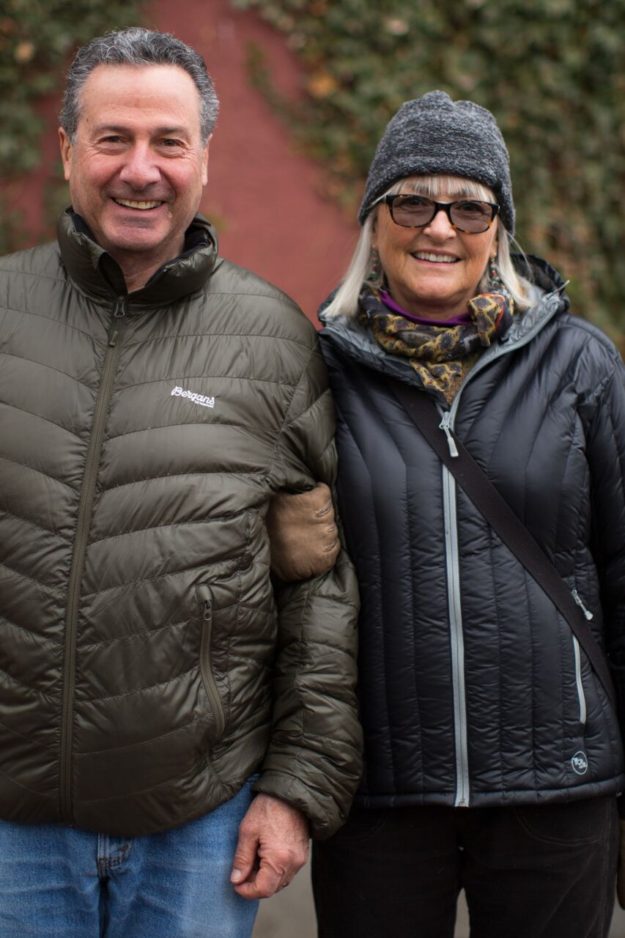
STILL CHASING THE BALL
“I liked chasing the ball-” And with no plans to ever retire, CEO Peter Duke of Point6 Socks apparently always will. Duke was referring to his chance to work his way up the Yankees farm system as a 17-year old outfielder from the Adirondacks in explaining his thrill of the chase. Lucky for the active feet the world over that skiing, another passion, became his professional pursuit rather than fly balls.
Duke has a history of performance: rather than pursue professional baseball, he chose skiing, and soon emerged as a peak performer there as well when named to the elite Professional Ski Instructors of America Demo team in 1970. Arriving in Steamboat in 1986 after stints teaching skiing both in Vermont and California, Duke recounts the materials technology of the day.
“Materials were a big part of the ski world then,” Duke notes, “synthetics like polypropylene, nylon, and Gore-tex were touted as state of the art in the moisture- wicking, body warming material. The synthetics wicked it away, but merely transferred it to the boot or shoe, so everyone had clammy cold feet,” he explained. ” After a season of literally pouring water out of his ski boots after work each day in a ski season of synthetic socks, the epiphany of a better product occurred to him the next season when trying a pair of merino wool socks given him by a friend.
“My wife Patty and I were operating a ski hat retail store then,” Duke noted. “But when I tried the merino socks, I thought ‘Now I understand.'”
The transition from retail to manufacturing and wholesaling was like starting all over, he said, but by year three, Duke said he knew they were onto something. “People were telling us they were having to find ways to rotate their merino wool socks because they couldn’t get enough new ones- I knew we had a tiger by the tail.” Another Steamboat success story, SmartWool, was launched. It was later bought by Timberland, which in turn was later bought by multi-billion dollar apparel conglomerate VFC.
The phrase “be careful what you ask for” might be more applicable to the entrepreneur than most. “That kind of growth is very exciting, but you have to find investors- ramping up is great but it has its difficulties.” One difficulty for a peripatetic Duke was a five-year non-compete after selling SmartWool. “I was bored,” he said. Point6 socks, named after the precise decimal in the human body temperature, was the cure.
Yes, he concedes that his repeated success means he’s sought out for advice. “My axiom for them is – simply be the best at it. I’m in the merino wool business,” he said. “And if you think you know all there is to know about merino wool, you don’t know anything. I tell others that, if you’re not optimistic about the business, get out.”
His supply chain is global; he takes a decidedly fair trade approach to buying raw merino sheep wool from farmers and ranches in New Zealand, has it spun for production for the textile belt of Tennessee and Alabama. Point6 Socks means stable, year-round work for about a dozen employees in Steamboat, to say nothing of the jobs created in the south and commodity price stability for the wool growers of New Zealand.
“There are a lot of independent business owners in Steamboat doing their own thing, just like it was when we were starting out,” he said. “It’s nice.”
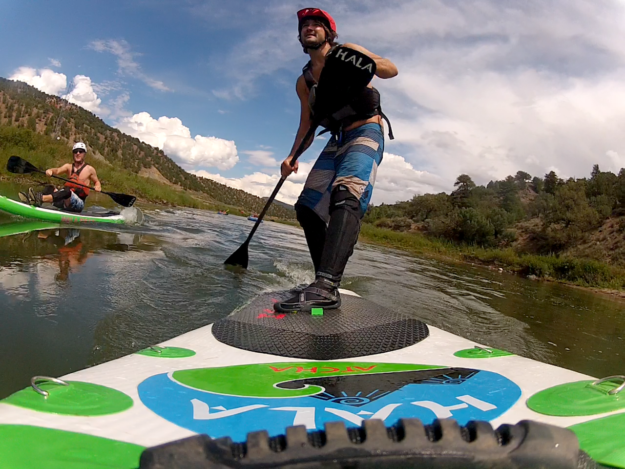
RIDING THE WHITE YEAR ROUND
Peter Hall arrived in Steamboat in 2006 when “ski instructor” emerged as a talent discerned in a vocational test. Mountain town living meant partaking of the assorted activities of the area funded by “work” as a ski instructor and Spanish teacher in the Steamboat Mountain School.
Five years later, the very snow he’d ski on in the winter became the basis for a business that, since opening in 2011, has doubled annually. How? By a singular focus on the company mantra: “Design. Adventure. Better.”
“I’d ruined some surf boards in the whitewater of the Yampa and discovered there were no high end river paddle boards or paddles,” he said, so Hall launched Hala Sports, a specialized component of the fast-growing river boarding segment of paddleboards. “Our niche is the inflatable board in the white water space,” said the 32-year old. “River boarding is relatively known in Colorado, but it’s just beginning everywhere else.”
Hall tested his friends on boards, most of whom were all too eager to take their shot at the Yampa, one of Colorado’s epic rivers. “The early prototype was huge for stability and durability, and while we’ve cut down on the size, we will still do big boards. Reducing weight is not ideal- a lighter bike is a more expensive bike, but a lighter paddleboard for the river is cheaper,” he noted.
Refining design and materials at home soon led to the life of a riverboard roadie to ply his wares at river festivals throughout the west. Orders flowed in (pun intended) and Hala Gear took off. “Steamboat was very conducive to my deciding to pursue Hala. I could see SmartWool, Point6, Moots, Honey Stinger, Big Agnes, Kent Erickson, and high-end ski manufacturers and ski pole companies,” said Hall. “Steamboat is great for inspiration with lots of enthusiasts for brainstorming and product testing and I could see what others achieved here. Peter Duke’s guidance (see above) in particular was great.”
Hala has expanded its line of river paddleboards from two to 11, has improved on a rocker shape (akin to today’s high performance alpine skis) for better responsiveness, patented a specially designed “butter knife” paddle and has four more patents pending (watch for what Hall calls “inflatable carbon
technology”). “I’m looking for stronger material that is less rigid,” he said. An investment in a 3-D printer has aided product development. Among the more interesting innovations is a retractable fin that’s spring loaded so it retracts if it hits a rock.
He’s traveled the typical financing route: first loan from family and friends, an SBA loan, then another, with all proceeds, plowed back into Hala. The focus remains on product improvement to ensure product success. He manufactures in several places in Asia and the U.S. and enjoys sales throughout the U.S. and a dozen countries.
Hall sees the big the ocean-based paddleboard companies eyeing his niche. “Our biggest challenge is the bigger companies with better buying power, so we continually improve our quality. Moots sells an $8000 dollar mountain bike, and their success shows there’s a market for quality.” Hall backs up that quality with a three-year warranty unmatched in the industry, and the company has a promotional video to show how resilient the boards are.
Hall says some of the bigger water sports companies are “adopting” some of his innovations, and he realizes the possibility of a bigger player removing Hala from the competitive arena with a buy-out.
“I don’t have an exit strategy, but you always listen to offers,” he said. “I want to stay in product development and would be happy to let someone else handle accounting and patent attorneys.”
Hall’s partner is his wife Anna, and together they’ve launched their latest growth prospect, their 18-month old daughter Stella. Work days are still long, but now he can pop on home for a quick cuddle during the day. Ah, the joys of small town living.
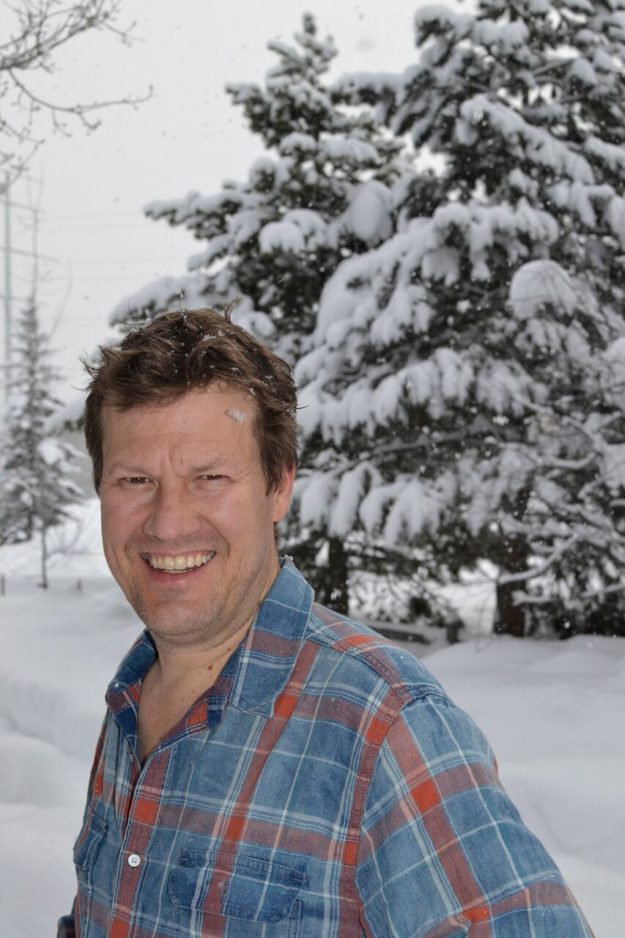
A GROWING FAMILY
Bronco Bob’s One Hand Sandwiches were delicious…they just weren’t profitable. That was a lasting lesson learned in the restaurant business by Rex Brice over 20 years ago. Unlike many in our compilation whose rise to entrepreneurial success seems as much a function of happenstance as circumstance, Brice knew, as a 14-year old kid in North Carolina, that cooking is what he wanted to do. He also knew he wanted to live in Colorado, and, upon arriving in Steamboat Springs in 1993, he knew he’d found the right place. “Unlike so many other great resort towns in Colorado, Steamboat has a real heritage and community feel,” he said.
Culinary school helped him learn the business and technical aspects of being a restaurateur, a choice made clearer by the counsel of a mentor. He said there were three ways to create a good future for oneself and family- one, to work for the government, with the prospect of a pension- two, work for a corporation for possible promotions, and three, open my own business. I wasn’t very good at following rules, so… I loved being a chef, but saw that the way to make a good living was to start my own business- my first was Bronco Bob’s.”
Bob’s taught him that sales don’t automatically translate to profits, and, despite strong sales, thin margins spelled the end for One Hand after about six months, but if at first you don’t succeed…
“After One Hand I looked for bricks and mortar full-service locations but nothing was coming together, so I opened a coffee shop and supplemented my income by consulting on menus, recipes and operational systems, something I continue to do some of today.”
So how did the coffee shop manage to stay, thrive and form the basis for several other concepts while Bronco Bob’s was relegated to the compost pile of restaurant history?
Brice said, “Restaurateurs make two mistakes: one is having just ONE concept and finding a location to match that concept and therefore overpaying for space and, two, keeping an eye on a space in hope that it’s the only spot that will work for them. We found motivated landlords who had struggling restaurants and I developed concepts to fit the space we were taking over.” He grinned. “We have four of the worst locations in Steamboat and the four busiest restaurants.”
Brice made sure Rex’s Family of Restaurants retained firm financial footing. Low debt allowed Brice to take advantage of the opportunity during the downturn of 2008 with the addition of Lil House County Biscuits, Laundry Kitchen and Cocktails and Catering.
No doubt food and service have been essential to that success, but Brice looks to serve the locals. “We try to hire, train and gear toward the locals,” he said. “It’s the best path to good year round business, and locals give good referrals. We saw good growth in 2006-7 with the construction boom; contractors and builders were here throughout the shoulder seasons. When the economy crashed that all went away but we are starting to see business in off seasons finally return.”
With about 200 employees on the payroll, Brice works to get everyone on the same sheet of music as it relates to the mission and vision for his restaurants. Those values extend beyond the customer to the community as well. “The best way to get everyone on board for our restaurants is for us to live it- we can preach mission and philosophy all day, but that’s not going to do much for you without putting it into daily practice.” That commitment has been recognized in the industry and community with awards citing Rex’s Family of Restaurants for philanthropy, business leadership, and community service from the City of Steamboat Springs, the Yampa Valley Community Foundation, National Restaurant Association and others.
The Family grows; a sixth restaurant, Salt and Lime, featuring fare described by Brice as “progressive Mexican fare, not Tex-Mex” is due to be open by Christmas of 2015. Rex and wife Bettina also have a growing baby girl Grace, the namesake for Family member Gracie’s Grocer.
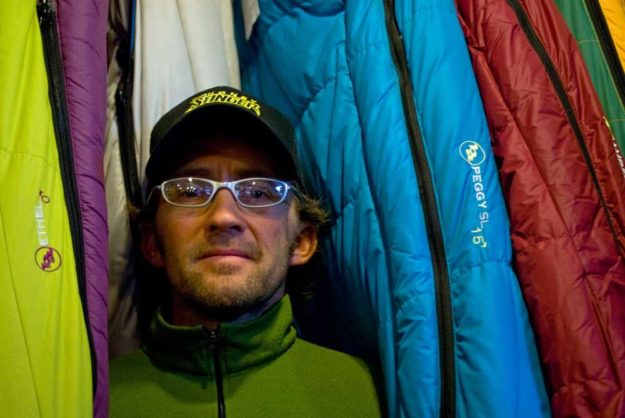
THE STEAMBOAT GAMBER
The annals of American business are filled with examples of family businesses started, built and lost, a phenomenon often referred to as “third generation amnesia.” Too often the hard work and vision that builds a strong business fails to translate to the grandchildren, and in the course of a century, the legacy of entrepreneurship is obliterated.
Not gonna happen in the Gamber family. Steamboat’s Bill Gamber has built three businesses in town based on lessons learned in the Pennsylvania honey business started by his grandfather with just two hives. Those led to the creation of Dutch Gold Honey, the largest supplier of honey to such giant enterprises as the major cereal makers, Smuckers jams and the like.
Though the newest of his three companies, Gamber’s Honey Stinger, the maker of honey-based performance and protein bars, gels, chews, and waffles (with gluten free waffles coming soon) is the company with closest ties to granddad’s early efforts.
“My dad took what my grandpa started and really grew that business nationally, which helped get him on
the National Honey Board,” Gamber recalls. “They were looking at honey as fuel for high-performance athletics; my dad saw the potential, but he was just too busy with the core business. I was racing triathlons, and I found honey-based fuels were a natural fit.”
With capital being a major issue in launching a new enterprise, Gamber was in the enviable position of self-funding Honey Stinger from proceeds from Big Agnes, an earlier start-up he co-founded 16 years ago focused on high-performance camping gear, namely sleeping bags and tents. “We just saw room for a lot of improvement in sleeping bags,” he said. “There really hadn’t been any improvements in 20 years, and things like slipping off the sleeping pad and such- well, we knew we could make it more of an integrated system.”
Gamber and associates experimented with some prototypes, knew some sales reps who liked them, generated great initial interest and…lost money for the first couple of years. Major sports retailer REI took them on and when Outside Magazine cited the Lost Ranger down bag as a “Killer Value,” Big Agnes got bigger fast.
Not content to merely sleep under the stars, Gamber started improving tents with similar success. “When we developed light-weight tents, we really grew fast,” he noted. It didn’t hurt that Backpacker Magazine lauded the company’s super light tent for singles in its very first year either. Production needed ramping up.
“Like so many businesses, we were intent on making everything in the U.S.” he said. “I’m from a family business background that liked to keep business local, but there was just no way to keep the prices down given the costs of U.S. manufacturing, so we’ve established some good relationships with some smaller family-style custom manufacturers in Asia.”
In completing the circle, Gamber imported more than himself when he arrived in Steamboat. His BWear Action Products (BAP) began in Lock Haven, Pennsylvania when he started selling bike shorts and triathlete gear from his dorm room. BAP today has expanded to include insulated outerwear, jackets and clothing for adults, children and even babies.
With sales, production and distribution worldwide, Gamber remains committed to the Boat, but he concedes that trade-offs are unavoidable. “It’s great to mountain bike outside our office, skin up the hill at the resort before work, and have employee campouts where we really get into thinking about our products, about ways to improve them. We have Steamboat all over our products….we are proud of who we are and where we work and live. At the same time, we can end up having employees unloading containers at 20 below or pushing delivery trucks out of
the ditch during a snowstorm, but everyone working here knows it’s a tradeoff worth making.”
Growth continues in the Gamber enterprises; employment has more than doubled in less than five years to some 100 employees, and a payroll of $6 million is just a portion of the economic impact on the area. “We have some efficiencies with three businesses, and that helps us employ people year-round with benefits and profit sharing,” he said. It’s a success story as sweet as honey.
Diversifying the economy to more year-round jobs insulated from the uncertainties of weather and the ever-changing tastes of tourists has been the clarion call of Chambers of Commerce throughout every mountain town in the west. Steamboat has attracted the brains, work ethic, capital, and production to add a whole other chapter to this storied Colorado mountain town with many of these local success stories reaching across the rest of the planet. It’s a model worth emulating for mountain towns everywhere.
by Jim Felton
Feature Photo by Brendan Durrum
Mountain Town Magazine | We are Colorado’s Mountain Town Magazine
Copyright 2021 Mountain Town Magazine all rights reserved.
